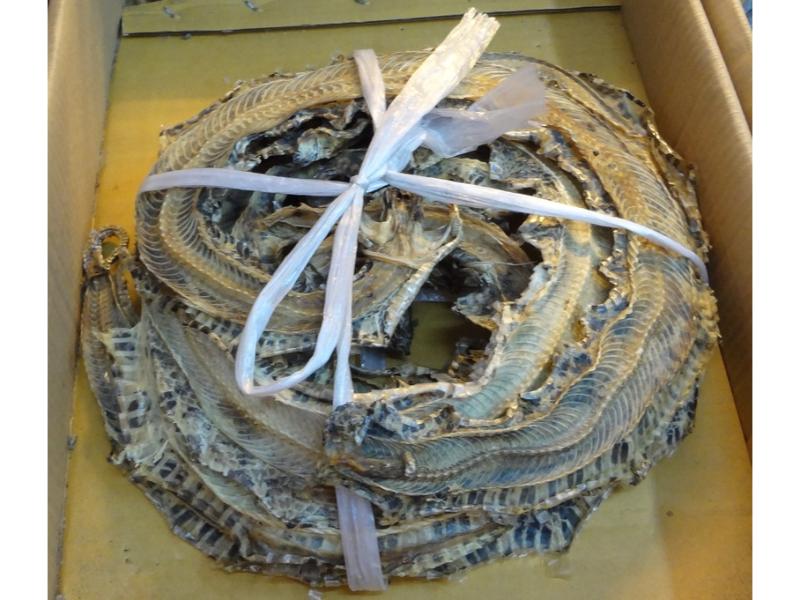Search in medicinals
Bungarus seu Agkistrodon
Krait/agkistrodon
白花蛇 〔白花蛇〕 bái huā shé

Kingdom: Animal
Origin in PRC Pharmacopoeia: Agkistrodon acutus (Guenther) . (PRC Pharmacopoeia)
Origin in unofficial sources: Agkistrodon acutus (Günther); Bungarus multicinctus Blyth; Elaphe moellendorffi (Boettger)
Use: Medicinal
Category: Wind-damp–dispelling agents / Wind-cold-damp–dispelling agents
Properties: Sweet, salty; warm; toxic.
Channel entry: Liver channel.
Actions and indications:
- Dispels wind-damp, frees the network vessels, and soothes the sinews: All patterns of wind-cold-damp impediment, insensitive impediment, hypertonicity and pain of the joints, numbness and tingling of the limbs, wind stroke with hemiplegia.
- Dispels wind and relieves itching: Itching of the skin, stubborn lichen, and dormant papules (urticaria).
- Settles fright and checks tetany: Acute or chronic child fright wind, spasms and convulsions due to wind.
Dosage and method: Oral: 5–15g in decoctions. In pills or powders, use 1–1.5g of qí shé (Agkistrodon) or 0.5–1g of jīn qián bái huā shé (Bungarus Parvus) per dose.
Warnings: Bái huā shé should be used with care in
Notes: Bái huā shé is known by the pharmaceutical name of Bungarus seu Agkistrodon because either species can be used. However, they are often distinguished in the literature as jīn qián bái huā shé (金钱白花蛇 Bungarus Parvus) and qí shé (蕲蛇 Agkistrodon). The former is more potent and is used in a lower dose of 0.5–1 g in pills or powders.
Quality: Undamaged snakes are the best.
Production area: Guǎngdōng, Húnán, Húběi, Zhèjiāng, Guǎngxī.
Back to search result Previous Next